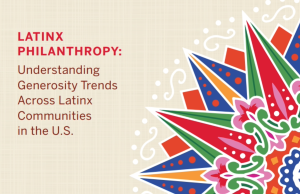Philanthropy has withstood a declining number of donors for nearly two decades in part by leaning more on aging affluent donors. But times are changing, and philanthropy is going to be in trouble if it doesn’t course-correct.
That was the warning from fundraising coach, philanthropist and self-described changemaker Lisa Greer, author of “Philanthropy Revolution,” and a presenter at the AFPICON international conference sponsored by the Association of Fundraising Professionals (AFP) that began Sunday in New Orleans and continues through Tuesday.
The cracks in the fundraising edifice might not be readily apparent given the nonprofit sector’s resilience — the sector is now the third largest nongovernmental employer in the United States, surpassing even manufacturing — and its continued success at reeling in more dollars, even if from fewer people.
But donor retention has been declining and “The Great Wealth Transfer” is now underway, which will result what she estimated would be $68 trillion transferring to Gen Z and Millennials during the next two decades. That doesn’t even scratch the surface of a new bumper crop of young, self-made millionaires who are beginning to emerge. Millennial millionaires, who numbered 618,000 as of the last census, are being minted anew every day and likely number close to a million or more now.
“Sixty percent of wealthy people in the United States are first-generation wealthy who did not inherit their wealth, and it’s likely they’re not even on your prospect lists or radar,” Greer said.
In short, what were once tried-and-true methods of fundraising — canvassing for donors by inviting them out to lunch, holding an annual charity golf outing or fashion show, thanking donors at your once-a-year gala, and listing their contributions in your annual report — are now passé and potentially even turning off a new generation of donors. Yet many fundraisers unwittingly continue to overlook this new generation.
“Relying on the same donors and the same traditional techniques that worked in the past is unsustainable, and we’re going to keep losing money if we don’t adapt,” Greer said.
How to appeal to this new generation of donors remains the big question. The answer starts with recognizing that most of them want authentic relationships and care more about causes than organizations.
Encouragingly, 82% of those aged 18 to 34 who know about GivingTuesday participate, showing that the ideal of generosity hasn’t skipped a generation as many fear, she said. “But the idea that they’re going to give to your organization just because Daddy gave isn’t going to happen,” Greer said.
Making connections with these new donors often starts with simply telling them about what you do and offering them volunteer opportunities, which many of them use to “check out” an organization. “How you treat your volunteers is going to influence whether they want to give,” Greer said.
The prototypical donor of the past is changing in other ways. Currently 45% of millionaires in the United States are women, she said. Black families have also contributed the largest proportion of their wealth to charity out of all racial and ethnic groups studied since 2010, and Latino households are the most likely to have a multigenerational tradition of giving. Fundraisers are leaving money on the table by ignoring these and other potential new donors right in front of them.








